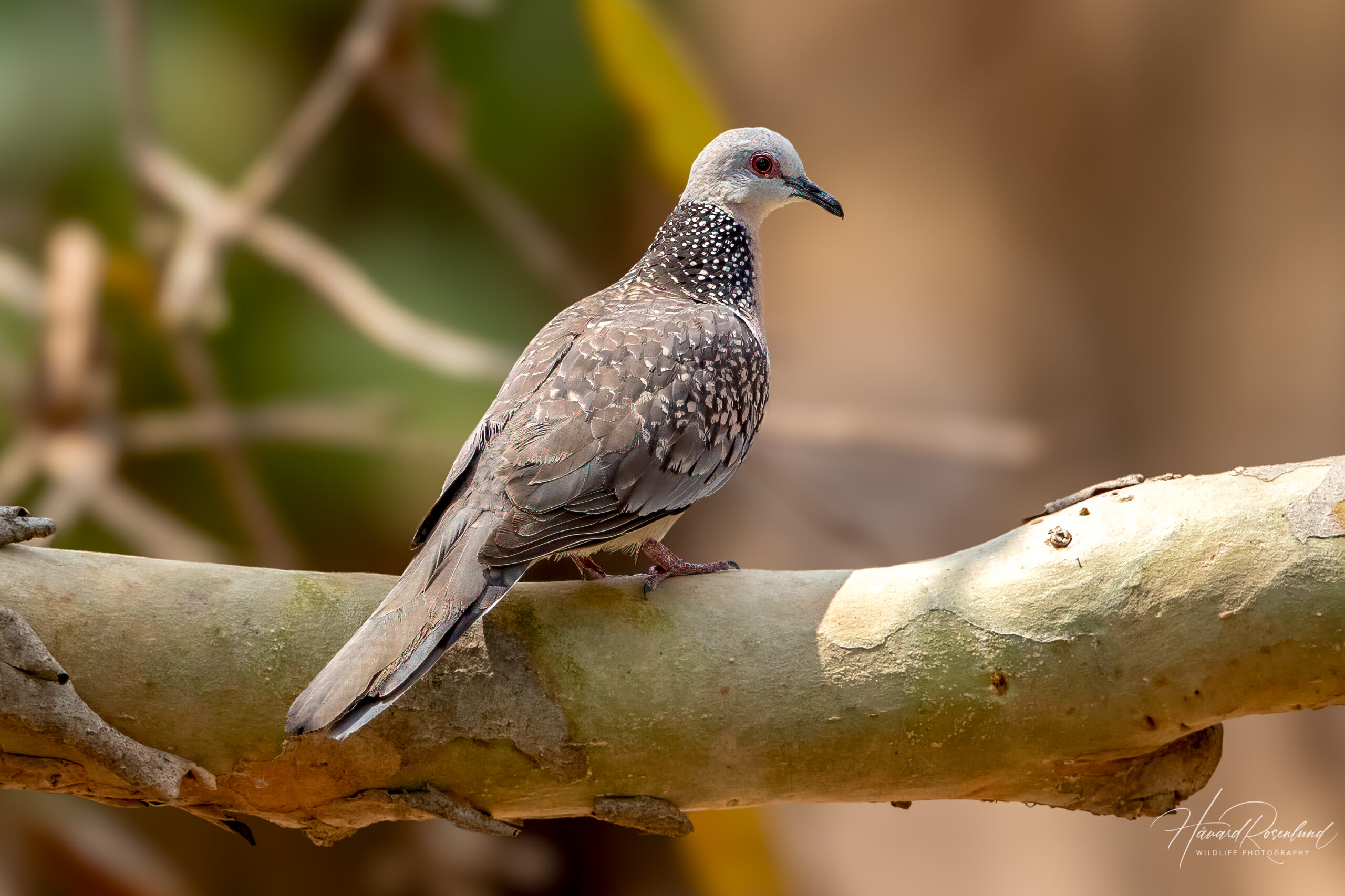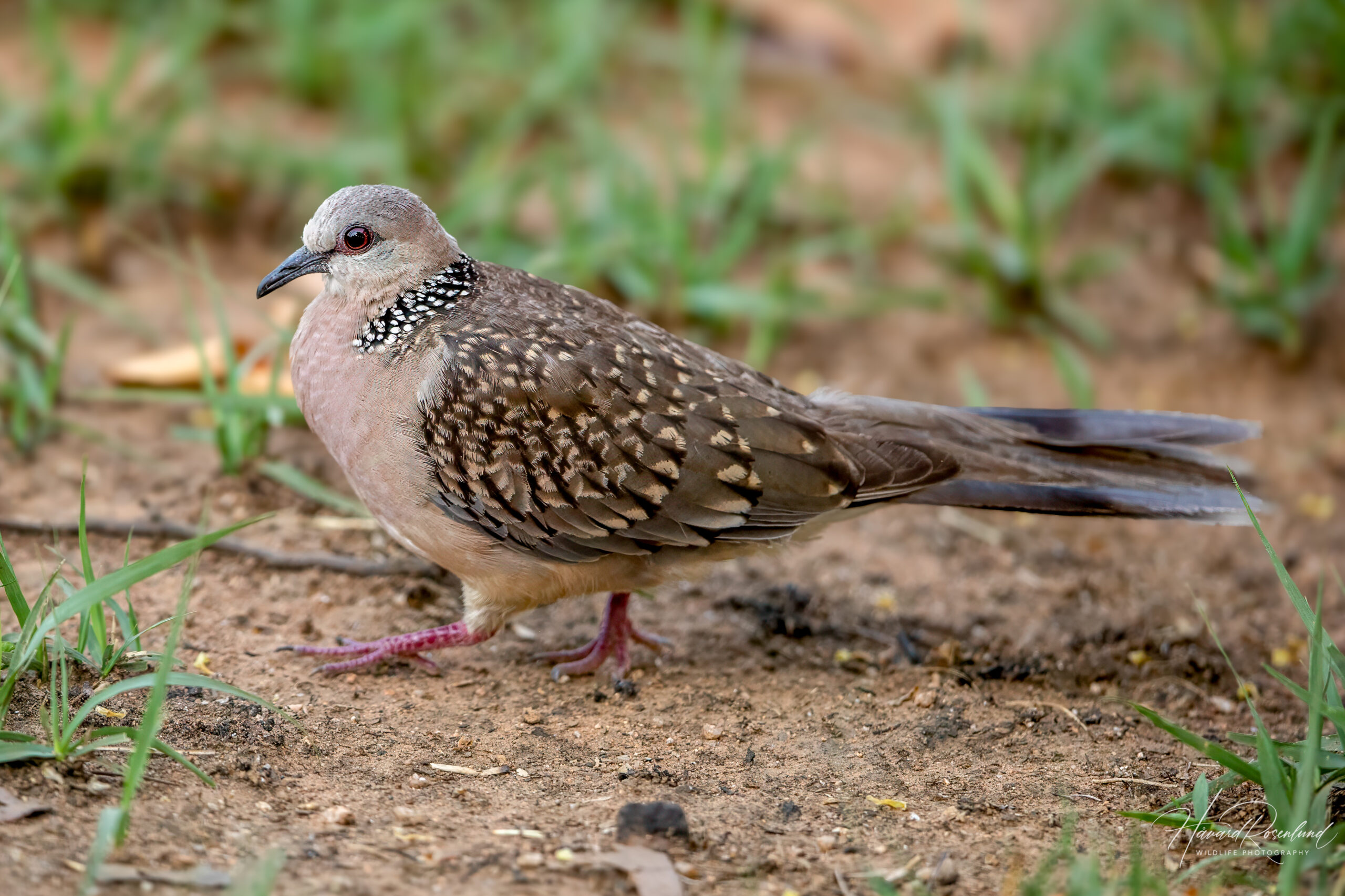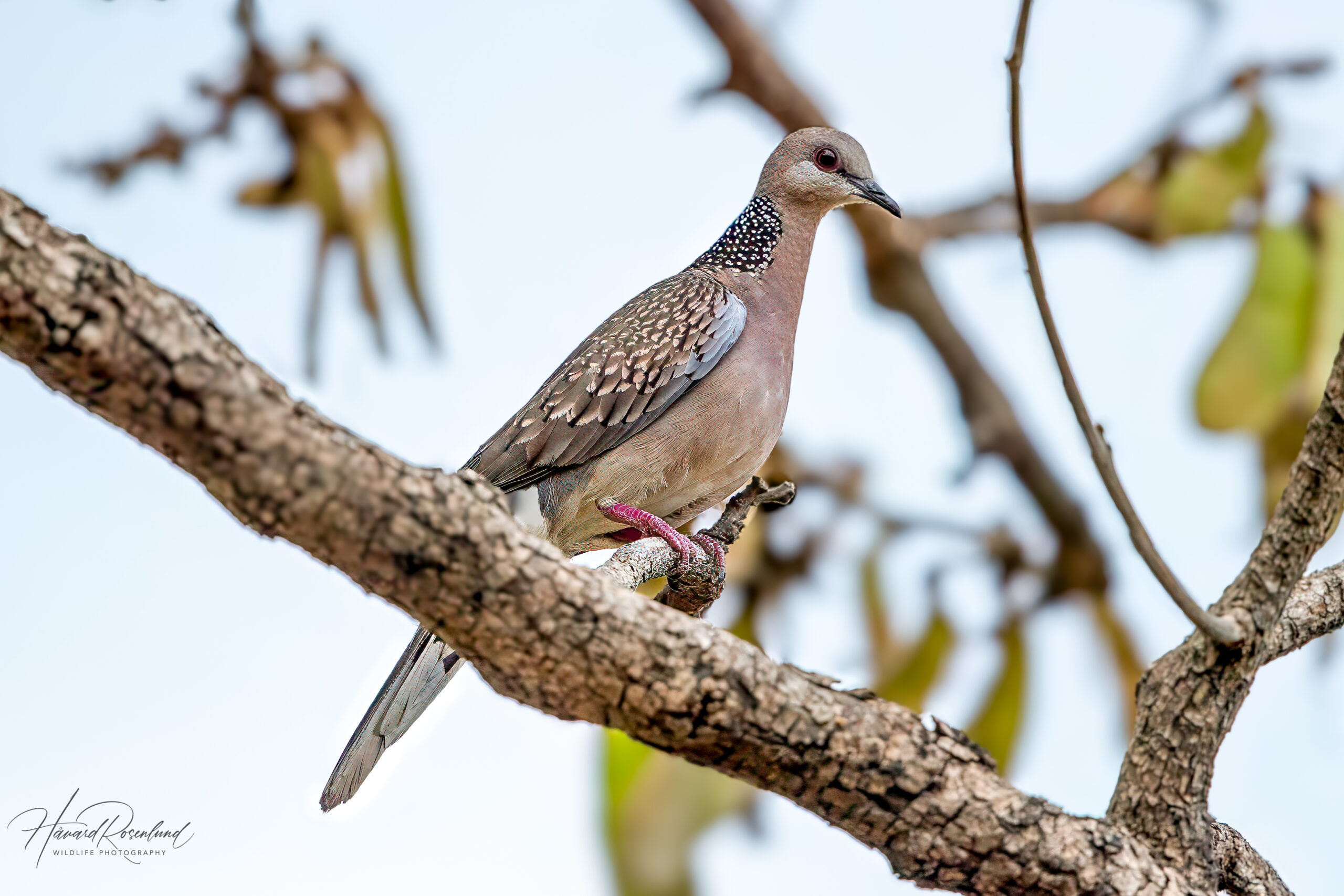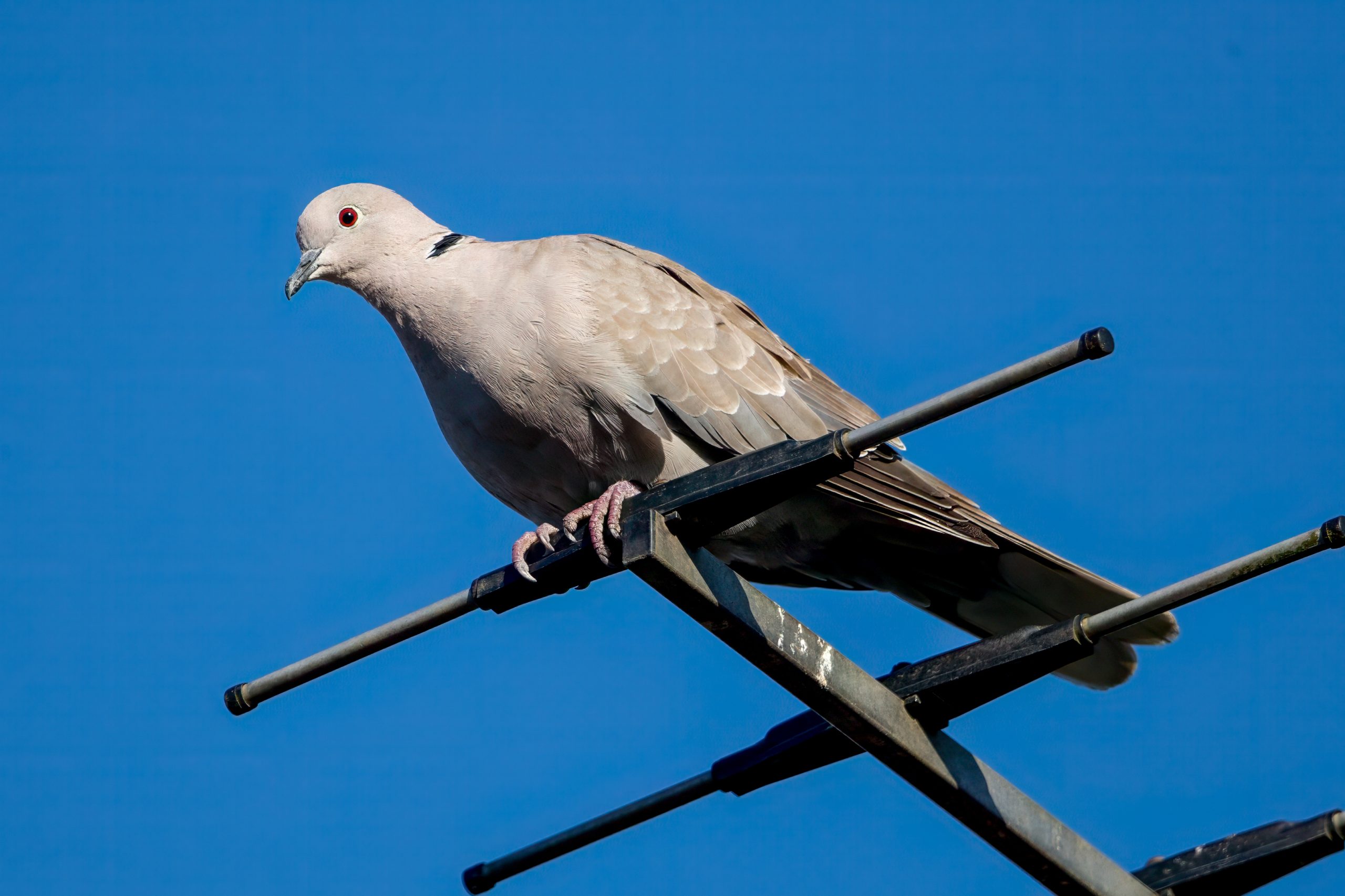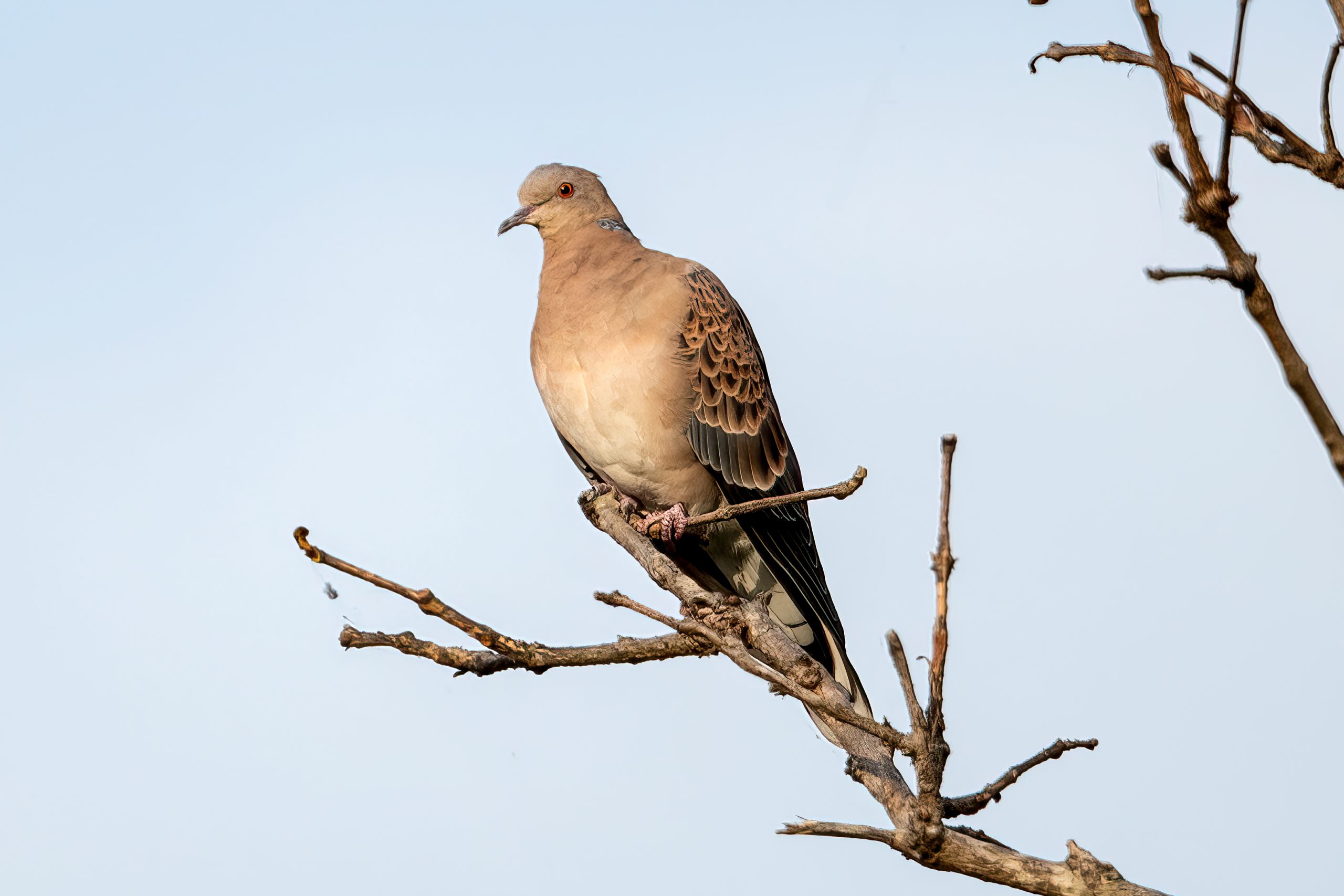Description
The spotted dove (Spilopelia chinensis) is a medium-sized bird with a length of about 30 cm (12 inches) and a wingspan of approximately 45 cm (18 inches). It is native to South and Southeast Asia but has been introduced to many parts of the world, such as Australia, New Zealand, and several Pacific islands, including Hawaii. This species exhibits a distinctive pattern with a light brown body, pinkish underparts, and a black and white spotted patch on the back of its neck. The wings are brown with darker streaks and the tail is long and rounded. It is sometimes confused with the similar-looking laughing dove (Spilopelia senegalensis), but the spotted dove can be differentiated by its larger size and the spotted neck patch.
Some authorities split the spotted dove into two separate species, the western spotted dove (Spilopelia suratensis) and the eastern spotted dove (Spilopelia chinensis), based on morphological and vocal differences. The western spotted dove is found on the Indian subcontinent, and the eastern spotted dove is found in China and Southeast Asia.
Diet & habitat
Spotted doves are highly adaptable and can be found in diverse habitats including forests, gardens, agricultural lands, and city parks. They prefer areas with access to water and plenty of ground cover for foraging. Their diet mainly consists of seeds, grains, and small fruits. These birds often forage on the ground, pecking for food and using their beak to sift through leaf litter and soil. Occasionally, they may also consume small invertebrates.
Nesting
The breeding season for spotted doves varies with location but generally occurs during the warmer months. They are monogamous, often forming long-term pair bonds. The nest is a flimsy platform of twigs and grass, typically built in trees, shrubs, or even on building ledges. The female lays two white eggs, which are incubated by both parents for about 14-16 days. After hatching, the chicks are fed regurgitated food by both parents and fledge about 15-18 days later.
Status
The spotted dove is split into the western spotted dove and the eastern spotted dove by the IUCN, and both are classified as least concern on the IUCN Red List, due to their widespread distribution and large population size. They face no major threats and have adapted well to human-modified environments.




